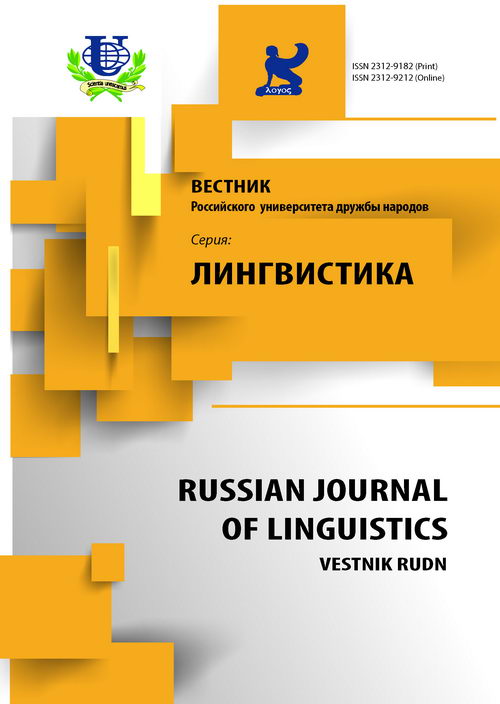Comparative analysis of semantic structure of cognate derivatives
- Authors: Kasimova GK1
-
Affiliations:
- Penza State University
- Issue: No 4 (2013)
- Pages: 93-101
- Section: Articles
- URL: https://journals.rudn.ru/linguistics/article/view/9589
Cite item
Full Text
Abstract
The article analyses cognate deverbal nouns belonging to the verb family “brat” (to take/to get). The research reveals different semantic structures of deverbal nouns motivated by various verbs with prefixes. Semantic paradigm of derivatives is determined by semantic valencies of motivating verbs and derivational formant.
About the authors
G K Kasimova
Penza State University
Email: zuhra_kasimova@mail.ru
Chair of Russian and methods of teaching Russian Department of History and Philology
References
- Улуханов И. С. Словообразовательная семантика в русском языке и принципы ее описания. — М.: Едиториал УРСС, 2004.
- Кубрякова Е. С. Типы производных значений. Семантика производного слова. Изд. 2, доп. — М.: Издательство ЛКИ, 2008.
- Кацнельсон С. Д. Типология языка и речевое мышление. — Л.: Наука. Ленинградское отделение, 1972.
- Апресян Ю.Д. Лексическая семантика. Синонимические средства языка. — М.: Наука, 1974.
- Кобозева И. М. Лингвистическая семантика. Изд. 2. — М.: Едиториал УРСС, 2004.
- Тихонов А. Н. О семантической соотносительности производящих и производных основ // Вопросы языкознания. — 1967. — № 1. — С. 113—120.
- Ширшов И. А. Типы полисемии в производном слове // Филологические науки. — 1996. — № 1. — С. 55—66.

















